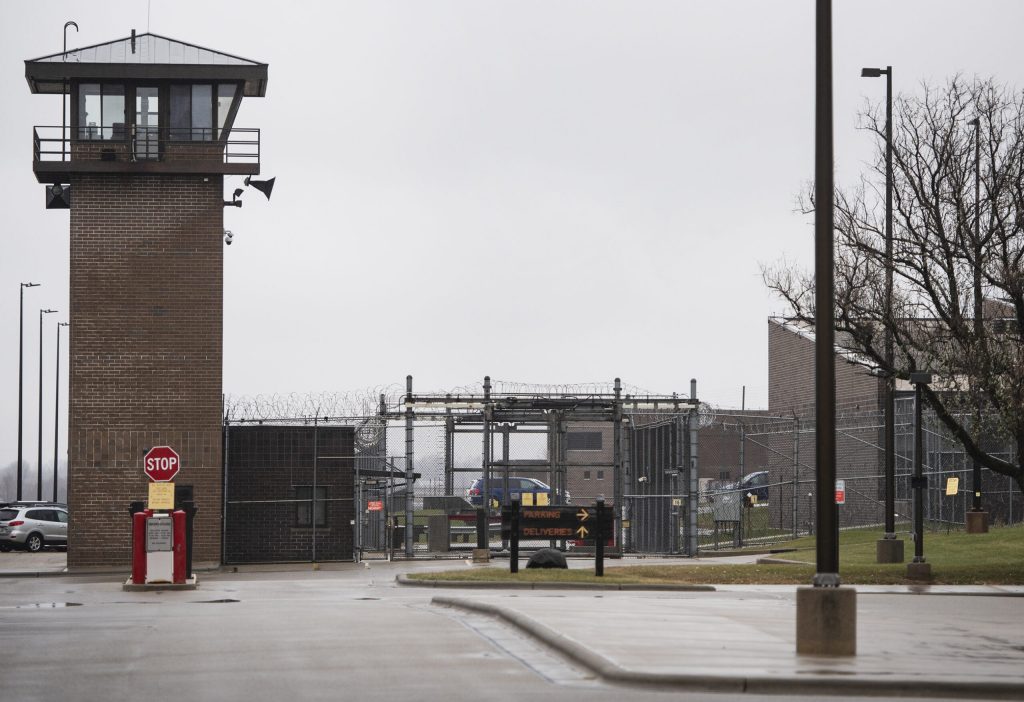Report on Wisconsin Prisons Warns of Overcrowding, High Staff Turnover
Raises alarms about solitary confinement of people with mental illness.
If you or someone you know is considering suicide, call or text the three-digit suicide and crisis lifeline at 988. Resources are available online here.
A recently-released report details problems at Wisconsin prisons including high staff turnover, overcrowding and issues with solitary confinement.
Wisconsin’s Department of Corrections paid the firm Falcon, Inc. roughly $500,000 to complete the year-long review of the prison system’s adult facilities.
Among other issues, the report zeroed in on the department’s policies for solitary confinement, officially known as restrictive housing.
Alarms raised about solitary confinement of people with serious mental health struggles
The report raised concerns about how often people are locked up in solitary confinement while dealing with serious mental health issues.
On the last day of March 2025, 872 adults were locked up in solitary confinement through the DOC, making up close to 4 percent of the prison population. That was roughly on par with the percentage of inmates in solitary confinement six years prior.
A significant number of those in solitary confinement — 101 people on the day measured in March 2025 — were classified as having a serious mental health issue.
The report noted that people who spend extended periods of time in solitary confinement are more likely to be part of the DOC’s mental health caseload, meaning they’ve been referred for mental health needs of varying severity. Sixty-nine percent of the people locked up in solitary confinement for more than 120 days were part of the DOC’s mental health caseload. By comparison, 46 percent of the general prison population was on that mental health caseload.
The report did commend the DOC for attempting to limit extended stays in solitary confinement by adopting a May 2024 policy that requires a higher-up to approve solitary confinement stays longer than 120 days.
It urged DOC to change its solitary confinement policies by creating “alternative” units for people with serious mental illness, “so they can automatically be diverted from restrictive housing.”

As of Tuesday, Oshkosh Correctional Institution had the most confirmed cases of COVID-19 of any facility in the state prison system. Angela Major/WPR
DOC urged to change practice of using solitary confinement for people on suicide watch
Per its policies, the DOC can send people to solitary confinement as “disciplinary separation,” which is punishment for bad behavior.
It also sends people to solitary confinement through what it calls “administrative confinement” which is when someone is deemed a threat to themselves or others if they’re kept with the general prison population. Typically, that extends to people who are flagged for “suicide watch,” if they’re deemed to be at risk for suicide.
“Observation cells are typically in restrictive housing units, which is problematic,” the report notes. “Individuals on observation status are not allowed therapeutic items, visits, phone calls, or recreation.”
The report urges the DOC to stop that practice, and instead move its areas for observing at-risk people to “more appropriate environments that support therapeutic care and patient safety.”
Marianne Oleson, an activist with Ex-Incarcerated People Organizing of Wisconsin, described the DOC’s existing solitary confinement policies as barbaric. She spent five years incarcerated in Wisconsin.
“It’s torture,” Oleson said of solitary confinement. “As someone who has spent time in their quote-unquote ‘restrictive housing’ unit for being suicidal, you’re only compounding the harm and the hurt.”
She said solitary confinement left her with permanent psychological scars.
“My mind was my weapon,” Oleson said. “My mind was destroying me, and the answer they gave me was to lock me down with that weapon. And I nearly broke. I’ve seen women break, honestly.”
In an email, DOC spokesperson Beth Hardkte acknowledged that most observation cells for people on suicide watch are located in the restrictive housing units of prisons, although she said there is no specific DOC policy requiring them to be located there.
“Observation cells are specially designed to ensure safety and property can be restricted to prevent self-harm,” she said. “Observation status also requires more intensive staffing and availability of psychological or health care staff.”
Report also highlights issues with overcrowding, high staff turnover
Also noted in the report are struggles with “staff attrition” and a large proportion of inexperienced staff members.
“WIDOC has experienced a great deal of staffing changes, with a significant number of the current staff hired during or after the COVID19 pandemic,” the report notes.
That overcrowding is leading to delays for people who are supposed to be transferred from one prison to another, the report notes. In some cases, that means people aren’t locked up according to their designated security level, such as men classified as medium-security remaining in a maximum-security prison.
Currently, there are more than 23,000 adults locked up in Wisconsin’s prisons — making them overcapacity by more than 5,000 people. The state’s prison population is now roughly at pre-pandemic levels, which is more than triple the size of the prison population in 1990.
Oleson said the report highlights the need for policy and legislative changes to cut back on the number of Wisconsinites behind bars.
“It confirms what we have said for years,” Oleson said. “Wisconsin’s prisons are dangerously overcrowded, under-resourced and in desperate need of healing.”
Wisconsin’s Democratic Gov. Tony Evers, who first took office in 2019, has said he wants to decrease Wisconsin’s prison population, although that reduction hasn’t happened in practice. Some Republican members of the GOP-controlled Legislature have said they oppose his goals of eventually decreasing prison beds and expanding certain early release programs.
In a statement, DOC Secretary Jared Hoy says the report by Falcon, Inc. shows the prison system is “moving in the right direction.”
Review details problems with solitary confinement, overcrowding in Wisconsin prisons was originally published by Wisconsin Public Radio.
If you think stories like this are important, become a member of Urban Milwaukee and help support real, independent journalism. Plus you get some cool added benefits.






















